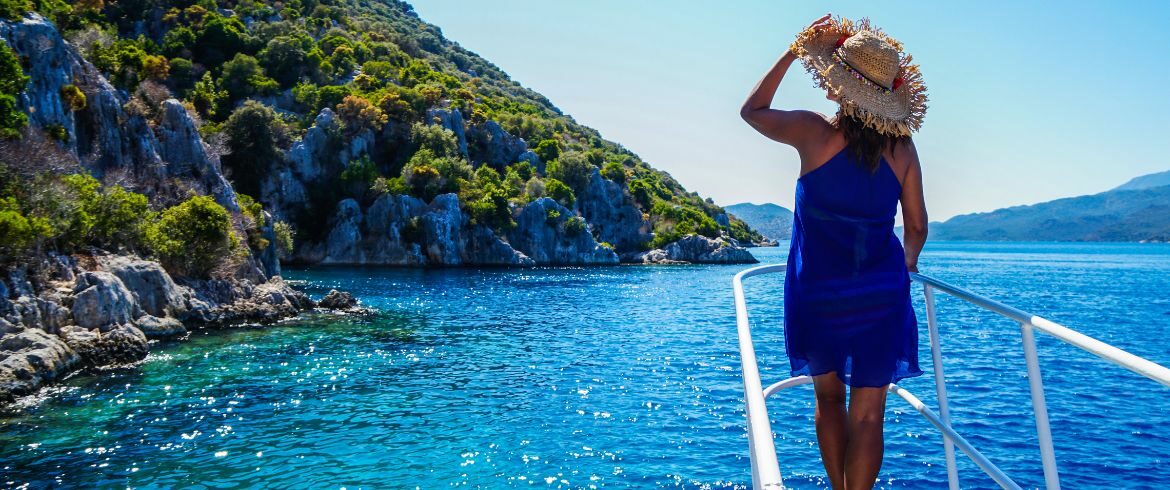The world’s oceans and coastlines have long fascinated humanity not only as sources of livelihood but as spaces of beauty, wonder, and inspiration. Today, these same waters form the foundation of a growing movement known as Blue Tourism, a concept that merges marine based travel with the principles of sustainability and environmental stewardship.
Blue Tourism emphasizes responsible interaction with oceans, seas, and coastal environments, ensuring that tourism development preserves rather than depletes the fragile marine ecosystems that sustain both nature and human communities. As climate change, pollution, and over tourism threaten these ecosystems, the call for a more sustainable “blue economy” has never been more urgent.
Understanding Blue Tourism
Blue Tourism refers to all tourism activities that occur in or around marine and coastal environments, including beaches, islands, reefs, wetlands, mangroves, and coastal towns. It encompasses everything from snorkeling, diving, and sailing to fishing, cruising, and coastal heritage exploration but with an added emphasis on ecological responsibility.
The concept is rooted in the Blue Economy, which promotes the sustainable use of ocean resources for economic growth, improved livelihoods, and ocean ecosystem health. In this framework, Blue Tourism is not just about recreation it is about promoting conservation, supporting local communities, and maintaining the long-term health of marine ecosystems.
The Economic and Environmental Balance
Coastal and marine tourism represents one of the fastest-growing segments of the global tourism industry, contributing billions of dollars annually to developing economies. Popular destinations like the Maldives, Seychelles, Mauritius, and Zanzibar rely heavily on ocean-based tourism for employment, foreign exchange, and infrastructure development.
However, this success comes with a cost. Unregulated tourism often leads to coral reef destruction, coastal erosion, plastic pollution, and habitat loss. Overcrowded beaches, unsustainable construction, and waste disposal from cruise ships can irreversibly damage marine biodiversity.
Blue Tourism seeks to restore this balance by ensuring that economic growth does not come at the expense of ecological integrity. It promotes low impact, high-value tourism where quality, conservation, and community engagement replace mass tourism and environmental exploitation.
Principles of Sustainable Blue Tourism
To achieve true sustainability, Blue Tourism must follow a set of guiding principles that balance environmental, social, and economic goals:
- Conservation First – Protect and restore marine and coastal ecosystems such as coral reefs, mangroves, and wetlands that act as natural buffers and biodiversity hotspots.
- Community Empowerment – Involve local and indigenous communities in tourism planning, ensuring they benefit economically and culturally from tourism activities.
- Responsible Operations – Encourage eco-friendly transport, sustainable seafood consumption, and responsible diving, boating, and recreational practices.
- Education and Awareness – Promote environmental education among tourists and operators to foster respect for marine life and habitats.
- Climate Adaptation – Integrate climate resilience measures such as coastal vegetation restoration and sustainable infrastructure design to mitigate the impacts of rising sea levels and storms.
Marine Conservation Through Tourism
When managed properly, tourism can become a powerful ally for conservation. Marine parks, eco-resorts, and guided diving experiences often generate funds that support the protection of coral reefs and endangered species.
For instance, marine protected areas (MPAs) in countries like Belize and Indonesia use entrance fees and eco certification programs to finance conservation projects and scientific research. Similarly, community led ecotourism initiatives in places like Kenya’s Watamu Marine Park or Ghana’s Ada Foah estuary integrate tourism with mangrove reforestation and turtle protection.
Such initiatives demonstrate that tourism, when guided by sustainability, can be both profitable and regenerative helping restore the very ecosystems that attract travelers.
Community Engagement and Local Livelihoods
At the heart of sustainable Blue Tourism lies community participation. Coastal populations often depend on fishing and small-scale trading, and tourism can offer alternative or supplementary livelihoods.
Local communities can serve as eco guides, run homestays, or offer cultural experiences linked to coastal traditions such as boat making, seafood cuisine, or folklore storytelling. Empowering locals not only ensures fair distribution of tourism benefits but also strengthens cultural preservation and social inclusion.
Successful Blue Tourism initiatives recognize that without thriving coastal communities, there can be no thriving coastal tourism.
Innovation and Technology for a Sustainable Future
Advancements in technology are enhancing marine sustainability and traveler experiences alike. Tools such as satellite mapping, underwater drones, and AI-driven monitoring systems help track coral bleaching, marine pollution, and illegal fishing.
At the same time, eco certified resorts are adopting renewable energy, waste recycling, and water purification systems to reduce environmental footprints. In some destinations, virtual diving tours and digital marine museums are offering immersive ocean experiences that minimize physical pressure on fragile sites.
Such innovations signal a future where marine exploration is guided not by exploitation, but by respect, restoration, and responsibility.
Challenges to Blue Tourism
Despite its promise, implementing Blue Tourism faces several challenges:
- Overdevelopment and weak regulation in coastal zones.
- Climate change impacts, including coral bleaching and sea-level rise.
- Pollution from plastics, oil spills, and untreated waste.
- Limited awareness among tourists about responsible marine behavior.
- Insufficient funding for conservation and enforcement in developing nations.
Addressing these requires coordinated global and local action stronger policies, regional collaboration, and a shift in consumer mindset toward eco-conscious travel.
Case Studies: Leading Examples of Blue Tourism
- The Maldives – Introduced “Eco-Luxury” resorts that combine high end experiences with coral restoration programs and renewable energy.
- Zanzibar, Tanzania – Promotes community-based marine tourism through local women’s seaweed farming cooperatives and coastal heritage tours.
- Belize Barrier Reef – Uses a conservation tax from visitors to fund marine research and reef protection initiatives.
- Philippines – Local governments have adopted “no plastic zones” on beaches and limit the number of divers in protected waters.
These examples show that sustainability and success can coexist when conservation becomes the core of tourism strategy.
Conclusion
Blue Tourism represents a hopeful frontier in the global quest for sustainability one where humanity’s love for the sea can coexist with a duty to protect it. It calls for a transformation in how we perceive travel: from consumption to conservation, from exploitation to education, and from short-term enjoyment to long-term stewardship.
By embracing Blue Tourism, nations can protect marine life, empower coastal communities, and ensure that future generations inherit oceans as vibrant and life-sustaining as they are today.
The ocean gives us life, adventure, and inspiration and it is now our responsibility to give back, ensuring that every journey across the blue leaves the world a little better than before.






